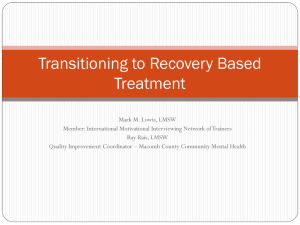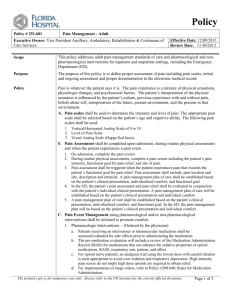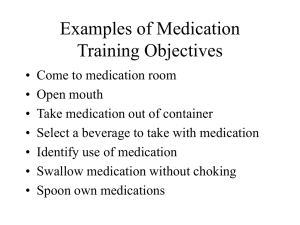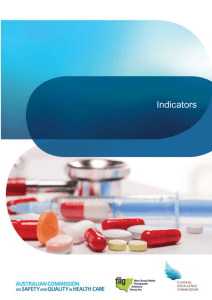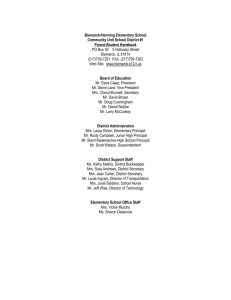870-Anansakunwatt-_b
advertisement
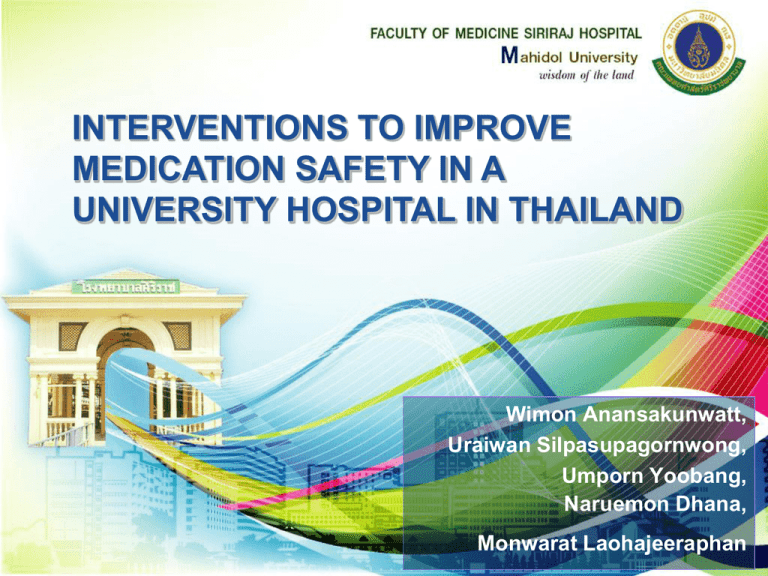
INTERVENTIONS TO IMPROVE MEDICATION SAFETY IN A UNIVERSITY HOSPITAL IN THAILAND Wimon Anansakunwatt, Uraiwan Silpasupagornwong, Umporn Yoobang, Naruemon Dhana, Monwarat Laohajeeraphan Problem Statement Adverse Drug Events were found a major complication for hospitalized patients and most of them were preventable. Interventions were implemented in Siriraj Hospital during the year 2000-2010 Medication error (ME) reporting system Drug Information Service and Poison Control Center (DIS&PCC) Adverse Drug Reaction (ADR) monitoring Staff education Patient education programs No study to compare and conclude the success factors Objective To study common success factors of interventions to improve medication safety during 2000-2010 Design Observational descriptive study Setting Siriraj Hospital, the 2,300 beds tertiary-care teaching hospital of Mahidol University, Thailand Study population Interventions used for medication safety improvement in the hospital during 2000 to 2010 Methods Reports and minutes of team meeting review Discussion with key persons of each team Outcome measures Number of ME reports ADR prevention reports Phone calls to DIS&PCC Score of test in education programs Factors influenced success of interventions Drug Information Services (DIS) and Poison Control Center (PCC) Initiation Intervention: changing from 8 hour service to 24 hour service including toxicologist as consultants providing staff education programs Result: DIS&PCC received more phone calls from 2,057 calls in 2005 to 20,054 calls per year in 2010 What do they want to know? 3000 2500 2000 1500 1000 500 0 ADR Availability Compat./Stab. Cost Dosage/Adm. Herbal/Conv.med Identification Interactions Law/Policy Phar.kinetics Pharmaceutics Preg.& Lact. Ther.use/Efficacy Adverse Drug Reaction (ADR) Monitoring Program Intervention: computerized alert in pharmacy prescription processing promoted asking patients a prime question for known allergy Note to nurse is printed in prescription processing ADR pink label on inpatient’s chart Result: could prevent more repeated known allergy cases from 152 cases to 3,139 cases per year Note to pharmacist is printed in prescription processing Red wrist band for patient with known allergy ADR pink label on outpatient’s chart Medication Error Reporting Intervention: the manual reporting was changed to on-lined system gathering manual monthly reports from nursing and pharmacy department to risk management office Results: Medication Error reporting increased significantly (p<0.05) Pharmacist’s note to prescriber Color strips were used to distinguish look-alike packaging Reports were used for communication and error prevention. Pharmacy newsletter Staff Education Program Intervention: Staff education programs were provided Results: scores were significantly increased from pre-test to post-test • 68.1% to 88.7% in high alert drugs (HAD) training (N= 312) • 63.5% to 81.8% in drug administration training (N= 242) 90 80 70 60 50 40 30 20 10 0 Pre post HAD drug admin Patient Education Program Intervention: Patients were empowered to use their medicines correctly and monitor themselves Results: Patients increased their knowledge scores from 29% to 55% (N=70, p<0.05) in transplantation clinic from 58.60% to 93.33% (N=1,502, p<0.05) in anticoagulation clinic Results from Staff Interview There were the terms of standards quality accreditation survey multidisciplinary computer program counseling education in the meeting minutes and discussions Key persons of each intervention worked after office hours to improve the interventions What we have learned from this study: Common success factors of interventions to improve medication safety are: Accreditations from external organizations Multidisciplinary team approach Using information technology Patient participation Devoted personnel Recommendation Enhancing these success factors in interventions is valuable to improve medication safety Economic outcome studies of these interventions are suggested THANK YOU FOR YOUR ATTENTION
